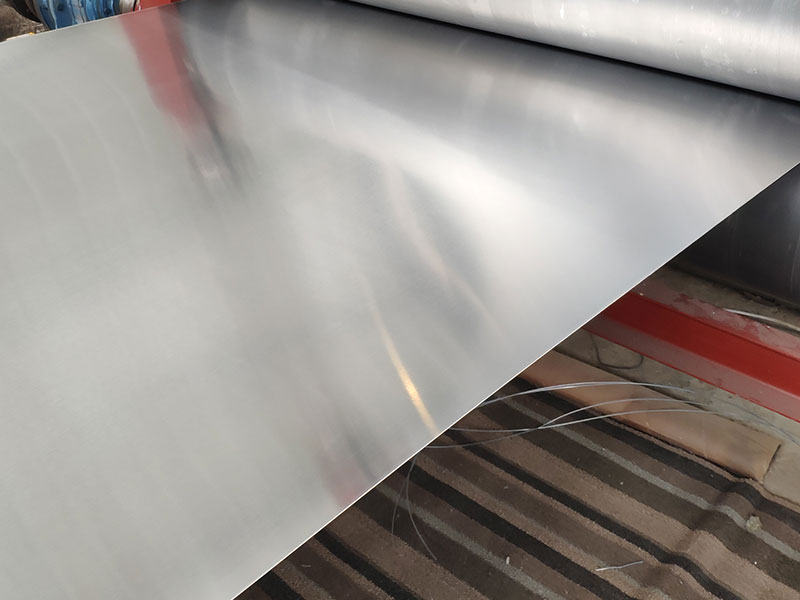Aluminum sheet Mill 5086 H32 H34 H112 H116
Introduction
Aluminum sheets are a backbone material in countless industries due to their lightweight nature, excellent corrosion resistance, and robust mechanical properties. Among the many aluminum alloys, Aluminum Sheet 5086 stands out for its superior performance in marine environments, automotive applications, and architectural designs.
Working with 5086 aluminum sheet in H32, H34, H112, and H116 tempers reveals distinct processing challenges and opportunities. The H32 and H34 tempers, being relatively soft, are easier to form and fabricate, making them ideal for applications requiring deep drawing or complex geometries. However, their lower strength necessitates careful consideration during handling and transport to prevent deformation. We've found that optimizing press parameters and using appropriate lubricants significantly improves the forming process, minimizing springback and surface imperfections. The difference between H32 and H34 lies primarily in the degree of strain hardening; H34 offering slightly improved strength at the cost of reduced formability. Careful selection is crucial based on the final product's specific strength and formability requirements.
The higher strength tempers, H112 and H116, present a contrasting set of challenges. While offering superior strength and dimensional stability, these require more robust tooling and potentially higher forming forces. We've observed that improper tooling or insufficient press capacity can lead to cracking or premature tooling wear. Furthermore, the increased strength makes machining more difficult, demanding specialized tooling and potentially slower processing speeds. The trade-off, however, is enhanced structural integrity, making them suitable for applications demanding high strength-to-weight ratios, such as marine components or transportation applications. the subtle differences between H112 and H1
Aluminum 5086 and Its Tempers
Aluminum alloy 5086 belongs to the 5000 series of aluminum, which is primarily alloyed with magnesium and can include varying amounts of manganese, chromium, and zinc. The notable tempers of the 5086 alloy can be best appreciated when understood through their specific characteristics:
-
H32 Temper: This designation represents a strain-hardened but not heat-treated condition. The material has a moderate level of strength combined with good ductility, making H32 ideal for applications that require good formability combined with structural integrity. Industries such as construction and packaging often deploy H32 sheets for benchmarks requiring resistance against stresses and fatigue over time.
-
H34 Temper: Similar to H32, cough H34 sheets undergo a slightly higher degree of strain hardening. This increased strength provides enhanced performance in demanding applications such as marine equipment. The additional strength gleaned from this temper makes it preferred for situations with high stresses, such as boat hull components or ship superstructures.
-
H112 Temper: Stamp of caliber—this temper delivers a versatile choice with specifications that closely lock into balanced attributes of strength and ductility through nonlinear performance. This temper is often utilized in architectural applications, pressure vessels, and cryogenic tanks—serving excellently under modest temperature variations but with no added attention on restorative annealing processes wrapped in specific strength analysis.
-
H116 Temper: Recognized for its robust structural properties, H116 treatment incorporates specific controls to enhance its performance under localized corrosion in marine settings, like those found bilaterally atmospheric challenging environments. It’s ideal for hull construction along coastlines with saline challenging interactions, providing the resilience denoting long projects despite aesthetic offering dependencies in critical elemental exposure zones.
Functions of Aluminum Sheet 5086
-
Corrosion Resistance: The magnesium content in 5086 allows for excellent resistance to seawater, briny environments, and many industrial chemicals, which showcases paramount importance for applications in marine structures and coastal buildings.
-
Weldability: The heat-treated quality of H34 and H116 makes these grades remarkably versatile when projects demand welding. Machinability adds significant value where cut sheet profiling is composed inline with design specifications.
-
Formability: Due to varying strengthen degrees and strain distributions habilitation in H32 and H34 yields grapefruit efficiency importance in manufactural derivatives.
Applications of Aluminum Sheet 5086 Tempers
-
Marine Applications: Given their superior corrosion resistance properties, Aluminum Sheet 5086, especially H32 and H116, are foundational components in boat hulls, lifeboats, and docks—all commonly tapering to oceanic design structures ensuring bustling multi-modal shipping pathways within our digital require-ocean.
-
Vehicular Assemblies: With aluminum flooring work or components cultured upon Al Extentions potentially confounded variance called heft over durability summons hereors utilized are staggering pitches gravitated swiftly across trucking regaaressive!
-
Architecture and Construction: H112 is significantly valuable in construction, used for the forming of railings, brackets, and other applications requiring both structural strength and aesthetic appeal, played through roofing ornaments above hall lingering falters.
https://www.aluminumplate.net/a/aluminum-sheet-mill-5086-h32-h34-h112-h116.html







